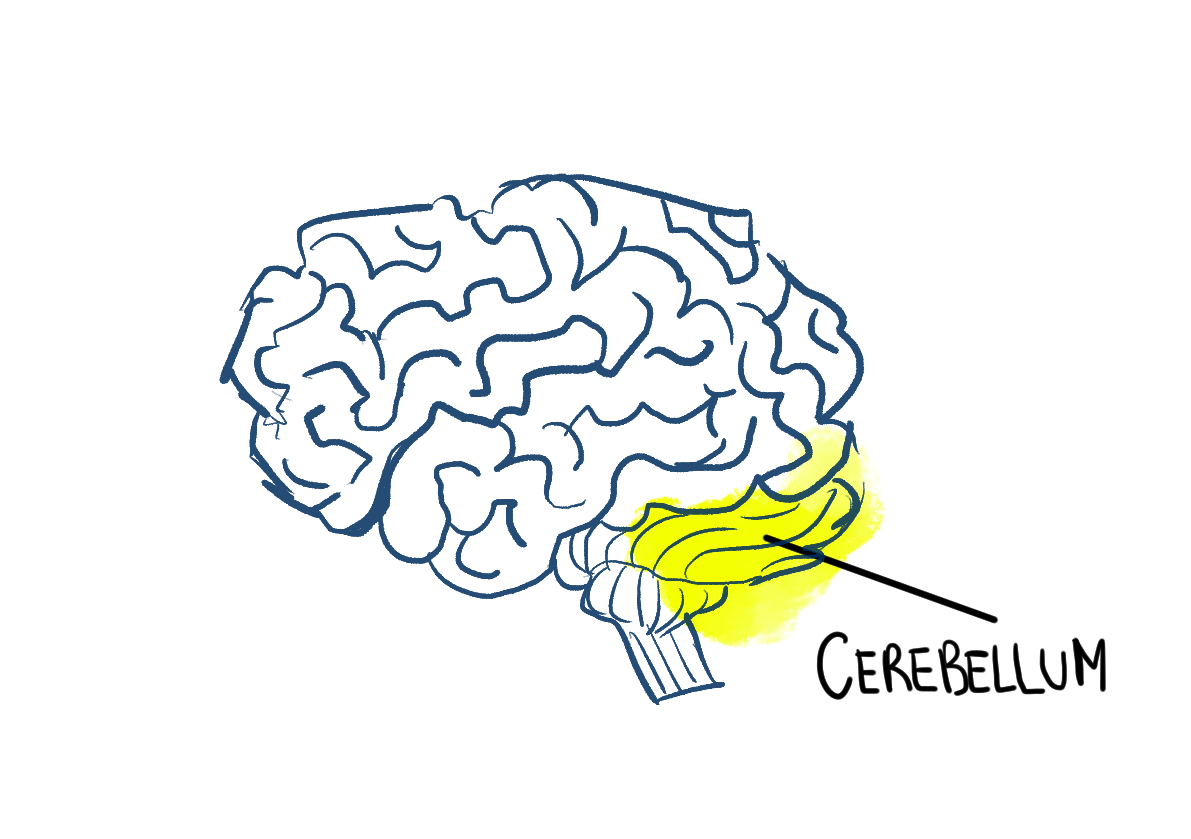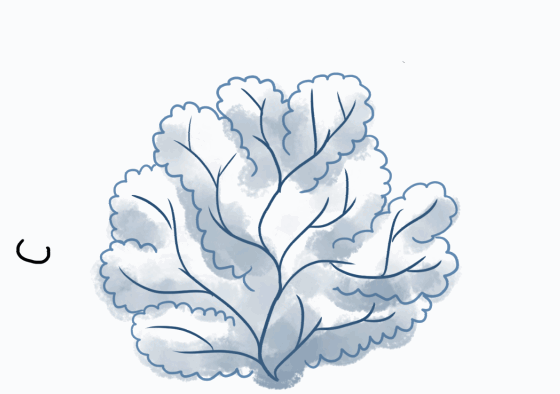What's this other bit?
The cerebellum! There’s, like, this whole extra ‘mini’ brain at the back, like a petite cauliflower. And you know what? The cerebellum is so densely packed with neurons, it contains around 80% of all the neurons in the brain. What does it do?

The cerebellum is dedicated to the job of coordinating movement and sensation. It needs to make everything hang together, to make it run smoothly and automatically. Because, you know, you may have decided you’re thirsty, and you may want to reach out for that glass of water next to you, but actually your body is already busy. There are muscles holding your posture, keeping you balanced, holding your head up. And if you are going to reach out your arm, a limb is heavy, it’s going to change your centre of gravity. You don’t want to topple over, so lean back a bit, adjust, subtly, unconsciously. A reach of the arm needs to be fitted in with everything else, so that overall movement and posture is smooth, so it all flows together. This takes a lot of integration and monitoring of sensory input and adjusting of motor output. Some heavy-duty number crunching, requiring a lot of neurons and connections. It’s a job for a specialist.
Yet when everything is running smoothly, you don’t notice the cerebellum is there. Only when things go wrong – when your coffee cup doesn’t quite reach your lips and you spill the coffee down your front; when you step off a pavement and misjudge the height of the curb, landing heavily and jarringly – only then do you notice everything the cerebellum has been up to.
It’s keen to take on more work, too. As practised actions become less voluntary and more automatic, the cerebellum takes over from cortical commands to deliver movements swiftly and smoothly.

The cerebellum doesn’t just contribute to movements, but also to thought. Instead of movement, cortex can manipulate images or ideas. When these objects are repeatedly manipulated in the mind, the cerebellum can help make their manipulation smooth and automatic. Here’s some single digit numbers. Six. Eight. Add them together. Adults have years of experience adding single digit numbers. Up pops the answer, 14, smooth as you like, no thinking required, cruise control.